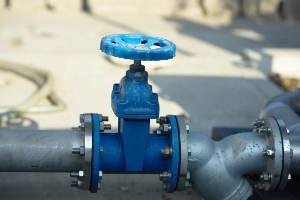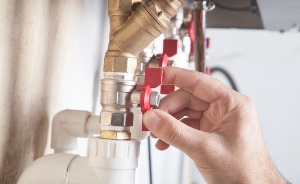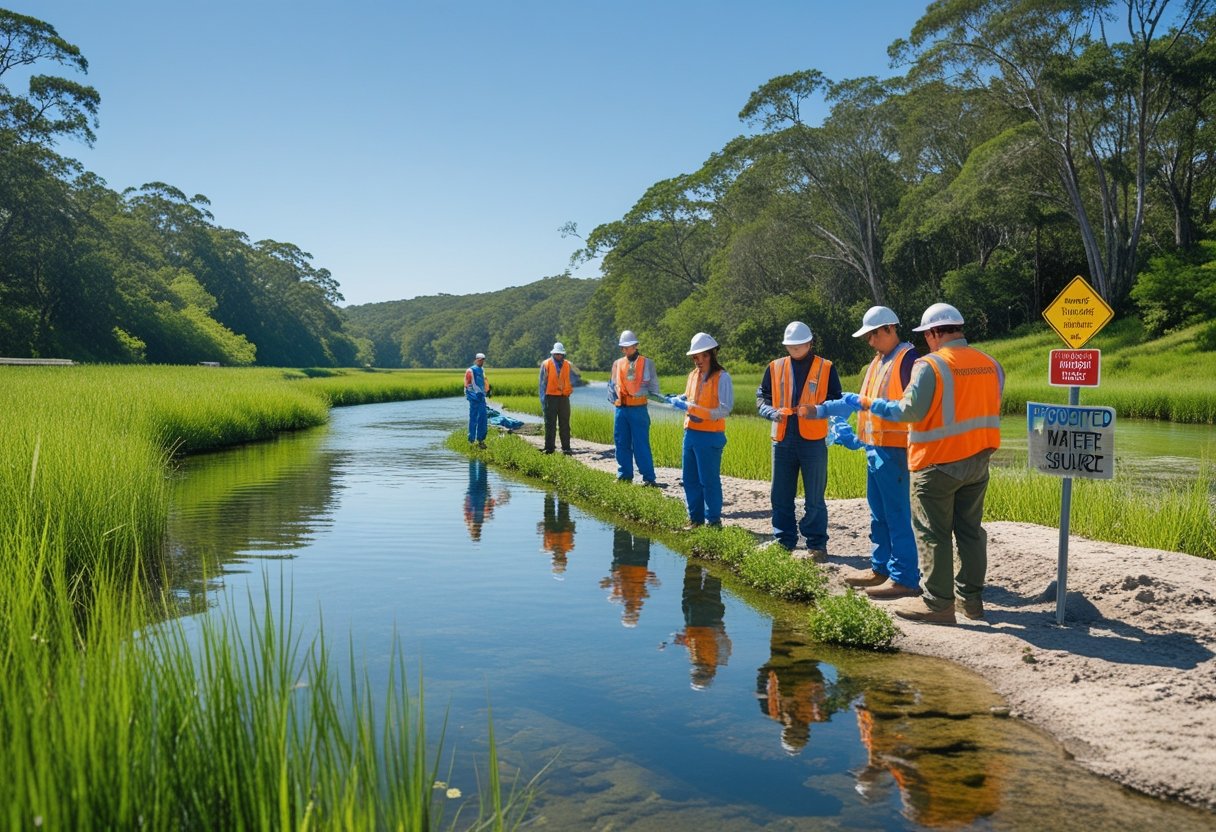Cloudy tap water can be puzzling and concerning for many homeowners. The primary cause of cloudy water is typically tiny air bubbles trapped in the water, which are harmless and often occur when the water has been turned off nearby. Occasionally, sediment or other impurities may also contribute to the cloudiness, requiring a closer examination.
Understanding why your water appears cloudy can help you determine if it is safe to drink or if further action is necessary. If you're unsure about the quality of your tap water, seeking advice from professionals is a wise step. At Pacific Backflow, we focus on protecting your water supply and ensuring it remains clean and clear for your family.
Regular maintenance, such as backflow testing, can also help you identify and resolve any potential issues with your plumbing system. Don't hesitate to reach out to Pacific Backflow to ensure your drinking water stays safe and free from contaminants.
Understanding Cloudy Tap Water
Cloudy tap water can be an unsettling experience. Understanding the causes and implications of cloudy water helps you take appropriate action and ensure your water quality remains safe and clear.
What Cloudiness in Water Really Means
Cloudiness in your tap water often results from tiny air bubbles. When water is pressurized in pipes, it can trap air, creating a milky or cloudy appearance. This type of cloudiness typically resolves quickly once the water sits for a moment. Other factors may include sediment or particulates, which can enter the system from pipes or plumbing fixtures. In some cases, it might indicate more serious concerns, such as algae growth or bacterial contamination. Regular assessments of your water quality are essential to identify underlying issues.
Common Signs and Indicators of Cloudy Water
Besides appearance, there are other indicators that point to water quality issues. You may notice a change in taste or odor, alongside the cloudiness. A consistent earthy smell can signal the presence of organic matter, indicating possible bacterial growth. Additionally, cloudy water can lead to sediment buildup in plumbing, resulting in inconsistent flow or appliance malfunctions. Keep an eye out for any unusual reactions, such as discoloration in your fixtures. Documenting these changes will be helpful when addressing the matter with professionals.
Is Cloudy Tap Water Safe to Drink?
In most cases, cloudy tap water caused by air bubbles is safe to drink. However, if the cloudiness persists or is accompanied by other alarming signs, such as foul odors or changes in taste, you should not consume it. Testing the water can provide valuable information about potential contaminants. Your peace of mind is crucial, and if you’re uncertain, consider contacting a service like Pacific Backflow. Ensuring your water quality is safe is essential for your health. Pacific Backflow can help you implement proper testing and solutions tailored to your needs.
Primary Causes of Cloudy Tap Water
Cloudy tap water is often a concern for many homeowners. Understanding the key causes can help you address the issue effectively. Below are the primary reasons that contribute to cloudiness in your water supply.
Trapped Air and Air Bubbles
One of the most common reasons for cloudy tap water is the presence of trapped air bubbles. These bubbles can form due to changes in water pressure or temperature. When water courses through the pipes, air gets dissolved in the water, leading to cloudy water when it exits your tap.
If the cloudiness disappears after a short time, it's likely air bubbles. However, if the water remains cloudy, other issues may be at play. Regular maintenance of your plumbing can help mitigate this issue, ensuring a steady flow of clear water.
Hard Water and Mineral Content
Hard water is another significant contributor to cloudiness. It contains a high concentration of minerals, such as calcium and magnesium, which can lead to visible cloudiness in your tap water. These minerals may precipitate out of the water when temperatures or pressures change.
While hard water is generally safe to drink, it can lead to scale buildup in your plumbing and appliances. For ongoing issues, consider a water softening system to reduce mineral content. This will not only improve water clarity but also prolong the lifespan of your plumbing fixtures.
Sediment and Particulates
Sediment and particulates can also make your tap water appear cloudy. These include dirt, sand, or rust from aging pipes. Such contaminants may accumulate over time, particularly if you have older plumbing systems.
To diagnose sediment issues, you may want to fill a glass with water and let it sit; sediment will settle at the bottom if present. Regular plumbing inspections can identify and rectify sources of sediment, ensuring cleaner water. At this stage, having reliable backflow prevention is essential to secure your water supply.
Suspended Solids and Contaminants
Suspended solids may arise from various sources, including plant matter, sand, or industrial pollutants. These contaminants can enter the water supply during storm events or through deteriorating infrastructure.
Testing your water for specific contaminants can clarify the source of the cloudiness. If harmful substances are present, initiating treatment is crucial. Pacific Backflow offers services that ensure your water remains safe and free from contaminants. Whether through backflow testing or installation, being proactive can safeguard your water quality.
Understanding these primary causes will empower you to take the necessary steps to remedy cloudy tap water. With timely attention, you can improve the clarity and safety of your drinking water.
Diagnosing the Source of Cloudiness
Identifying the cause of cloudy tap water is essential for ensuring its quality and safety. Understanding whether the cloudiness results from air bubbles, hard water issues, or sediment contamination can help you take appropriate action.
Testing For Air Bubbles
Air bubbles are one of the most common reasons for cloudy tap water. When water is subjected to pressure changes or temperature fluctuations, tiny air bubbles may form, creating a cloudy appearance.
To test for this, fill a clear glass with tap water and let it sit for a few minutes. If the cloudiness dissipates after a short time, then air bubbles are likely the cause, and your water is safe to drink. This kind of cloudiness doesn't pose health risks, merely aesthetic ones.
Identifying Hard Water Problems
Hard water can also contribute to cloudiness due to mineral deposits, such as calcium and magnesium. These minerals may appear cloudy when suspended in water.
To determine if hard water is an issue, observe other signs, such as scaling on faucets or dull laundry. You can also test water hardness using a home test kit. If hard water is confirmed, consider installing a water softener to improve quality and reduce cloudiness. Pacific Backflow provides reliable services to help protect your water system throughout San Diego County.
Checking for Sediment or Contamination
Sediment in your pipes can cause your water to look cloudy. This may include dirt, rust, or other particles that are not safe for consumption.
Start by flushing the tap for a few minutes. If the cloudiness remains, inspect your plumbing for leaks or corrosion. If you suspect contamination, consider having your water tested for safety. Persistent cloudiness alongside odd tastes or odors signals a need for professional help. For testing and repairs, you can rely on the expertise provided by professionals like those at Pacific Backflow.
Solutions for Cloudy Tap Water
When dealing with cloudy tap water, several effective solutions can help restore clarity and safety. These methods focus on natural settling, water treatment systems, and plumbing inspections. Here are the primary strategies to consider.
Letting Water Settle to Remove Air
One of the simplest solutions is to let cloudy water sit for a few minutes in a clear container. This method allows trapped air bubbles to rise to the surface and dissipate. After a short waiting period, observe if the water has cleared up. If it does, the cloudiness was likely due to air, a harmless issue.
This technique is particularly useful for transient cloudiness caused by sudden water flow changes or maintenance activities in your water system. If the cloudiness persists, further investigation is necessary, as there may be underlying issues affecting your water quality.
Water Softener Installation and Use
If your cloudy water is due to hard water minerals, consider installing a water softener. This system works by exchanging calcium and magnesium ions with sodium or potassium ions, reducing mineral content that can cause cloudiness.
Installing a water softener can improve not just the clarity of your water but also its taste and feel. You can find options suitable for your home or consult professionals. Local services like Pacific Backflow can provide assistance with installations, ensuring your system is optimized for water clarity.
Applying Water Filters for Sediment Removal
Using water filters is another reliable way to tackle cloudy water caused by sediments like dirt or silt. Different types of filters, such as sediment filters or reverse osmosis systems, can effectively remove these particulates.
Select a filter based on your specific needs. For example, whole-house water filters provide comprehensive solutions, while point-of-use systems, like faucet filters, are manageable for specific outlets. Proper maintenance of these systems is essential to ensure ongoing performance and clarity.
Addressing Plumbing and Pipe Issues
Sometimes, cloudy water can result from problems in your plumbing or pipe systems. Older pipes may corrode or accumulate sediments, leading to cloudy water output. Investigate if the cloudiness is localized to one faucet or affects multiple sources.
If the issue is plumbing-related, prompt inspection and repairs may be needed. You might want to engage professionals to check for leaks, corrosion, or sediment buildup. Companies such as Pacific Backflow can assist with inspections and repairs, ensuring your plumbing system remains compliant and functioning correctly.
Maintaining Water Quality and Preventing Cloudiness
Maintaining the quality of your tap water is essential to prevent cloudiness and ensure it is safe for consumption. Regular maintenance and awareness of potential issues can help you enjoy clean water free from unpleasant surprises. Here are key strategies for maintaining your water quality.
Routine Water System Maintenance
Consistent maintenance of your plumbing system is crucial. Check for signs of corrosion, leaks, or mineral buildup in pipes. Create a schedule for regular inspections and necessary repairs to maintain optimal water flow and quality.
Utilizing a water filter can also enhance the clarity and safety of your tap water. Filters remove impurities and can be installed at the faucet or throughout your home. Regularly change filter cartridges as recommended to ensure continued effectiveness.
Consider having a professional service like Pacific Backflow conduct annual backflow testing. This ensures compliance with local regulations and verifies that your water system is secure from contamination.
Monitoring Local Water Supply Issues
Stay informed about the water quality reports in your area. Your local water authority typically provides updates on any known contaminants or changes in the local supply.
Be mindful of notifications regarding water main breaks or repairs, which can temporarily affect clarity. Also, during periods of heavy rainfall or snowmelt, sediment can enter the water supply, leading to temporary cloudiness.
If you notice persistent cloudiness after such events, it may warrant further investigation. Keep a close eye on how your water reacts during these instances and act accordingly.
When to Consult a Professional
If cloudy tap water persists, or if testing reveals sediment, chemicals, or bacteria, it’s time to consult a professional. A certified technician can identify the specific cause of cloudiness and recommend appropriate solutions, whether that means repairs, water filtration systems, or replacements.
Pacific Backflow is committed to helping you maintain water quality through expert testing and installation services. You can rely on their experience to address any issues that arise, ensuring your water system remains safe and compliant.
Frequently Asked Questions
Cloudy tap water raises several questions regarding its safety and causes. Understanding these concerns can help you navigate the issue effectively.
How can I determine if cloudy tap water is safe to drink?
To assess the safety of cloudy tap water, observe if it clears after a few moments. If it does, it's likely due to air bubbles. If cloudiness persists or if you see sediment, it's wise to avoid consumption until testing confirms safety.
What causes sudden cloudiness in tap water?
Sudden cloudiness often results from changes in water pressure or temperature, causing air to dissolve in the water. It may also be linked to recent plumbing work or sediment disturbed in pipes. If the issue is persistent, further investigation may be necessary.
Are there any health risks associated with consuming cloudy water?
Most cloudy water is safe if caused by air bubbles or harmless sediment. However, if contaminants like bacteria or chemicals cause the cloudiness, health risks can arise. If uncertain, testing your water for impurities is advisable.
What methods are available to alleviate cloudy water issues in the home?
To resolve cloudy water issues, consider flushing your plumbing system to remove trapped air or sediment. Installing water filters can also help improve water clarity. Regular maintenance of plumbing can minimize future occurrences.
Why is there a difference in cloudiness between hot and cold tap water?
Cloudiness can differ between hot and cold water due to variations in temperature affecting gas solubility. Hot water holds less dissolved air, leading to quicker bubble formation and more visible cloudiness. This is a normal phenomenon and not typically a cause for concern.
Could the cloudiness in well water indicate a specific problem?
In well water, cloudiness may indicate issues like sediment intrusion or contamination. It's crucial to conduct routine testing to identify any contaminants that could affect water quality. If cloudiness persists, contact a professional for testing and assessment. For comprehensive water solutions, consider reaching out to Pacific Backflow for expert assistance.











